Creative food photography is a vibrant and captivating art form that transcends the boundaries of culinary documentation. It’s a visual symphony that celebrates the beauty and allure of food, transforming ordinary ingredients into extraordinary masterpieces.
Through the lens of creativity, food photography becomes a narrative art, where each image tells a unique story. Props, backgrounds, and lighting combine to create a visual tapestry that engages the senses and evokes emotions. The composition, color, and texture of each element dance together, creating a harmonious symphony that captivates the viewer.
Visual Appeal

Visual appeal is paramount in creative food photography, as it captivates the viewer’s attention and entices them to engage with the image. It involves creating visually stunning photographs that showcase the food’s beauty, freshness, and allure.
Techniques for enhancing visual appeal include using props, such as colorful plates, linens, and cutlery, to create a visually interesting scene. Composition plays a vital role, with techniques like the rule of thirds, leading lines, and negative space creating balanced and dynamic images.
Lighting is crucial, with natural light often preferred for its soft and flattering effects, while artificial light can be used to create specific moods and atmospheres.
Color
Color is a powerful tool in food photography, as it can evoke emotions and create a specific mood. Bright and vibrant colors can convey a sense of energy and excitement, while soft and muted tones can create a more calming and inviting atmosphere.
Consider the color palette of the food and its surroundings when styling the shot.
Composition
Composition refers to the arrangement of elements within the frame. The rule of thirds, which divides the frame into thirds both horizontally and vertically, is a classic technique for creating balanced and visually appealing images. Leading lines can draw the viewer’s eye to the focal point of the photograph, while negative space can create a sense of depth and focus.
Lighting
Lighting is essential for creating visually appealing food photography. Natural light is often the best choice, as it provides a soft and flattering illumination. However, artificial light can be used to create specific effects, such as dramatic shadows or warm, inviting tones.
Experiment with different lighting angles and intensities to find the most flattering light for your subject.
Storytelling
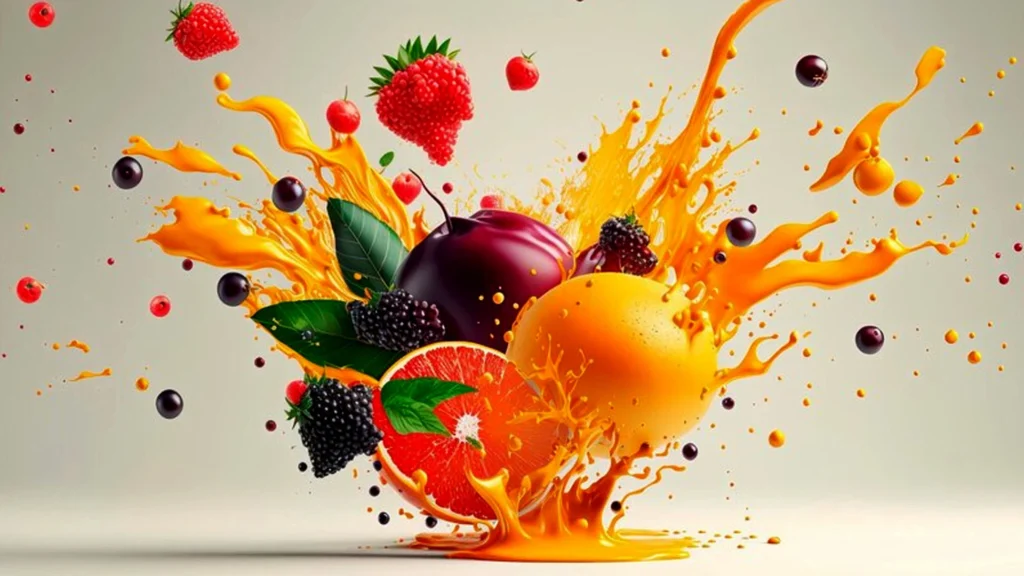
Creative food photography goes beyond capturing an image of a dish; it has the power to tell a story. Through the skillful use of props, backgrounds, and composition, food photographers can convey a narrative that evokes emotions and engages the viewer.
Crafting a Compelling Story
To effectively tell a story through food photography, consider the following elements:
- Props:Choose props that align with the theme or message you want to convey. For example, vintage utensils can evoke a sense of nostalgia, while modern tableware can create a sleek and contemporary feel.
- Backgrounds:The background can set the mood and context for the image. A rustic wooden table can convey warmth and authenticity, while a minimalist white background can create a sense of elegance.
- Composition:The arrangement of elements within the frame can draw the viewer’s attention to specific details and create a sense of balance and harmony. Experiment with different angles, perspectives, and focal points to achieve the desired effect.
– Discuss the importance of lighting and composition in food photography.: Creative Food Photography
Lighting and composition are two of the most important elements of food photography. They can make or break a photo, and they can help you to create images that are both visually appealing and appetizing.
Lighting is important because it can affect the mood and tone of your photo. Natural light is often the best choice for food photography, as it can give your photos a warm and inviting look. However, if you’re shooting indoors, you may need to use artificial light.
In this case, it’s important to use a soft light source, such as a diffuser, to avoid harsh shadows.
Composition is also important because it can help you to create a visually appealing image. There are a few basic rules of composition that you can follow to improve your food photography:
- Use the rule of thirds. The rule of thirds is a compositional guideline that divides your frame into thirds, both horizontally and vertically. The most important elements of your photo should be placed along these lines or at their intersections.
- Create a focal point. Your photo should have a clear focal point, which is the area that you want the viewer’s eye to be drawn to. This could be the main dish, a particular ingredient, or a specific detail.
- Use negative space. Negative space is the empty space around your subject. It can help to create a sense of balance and harmony in your photo.
Lighting

Lighting is one of the most important elements of food photography. It can transform the look of food, making it look more appetizing, inviting, and even dramatic. There are three main types of lighting used in food photography: natural light, artificial light, and mixed lighting.
Natural Light
Natural light is the light that comes from the sun. It is free and readily available, and it can create beautiful, warm, and inviting images. However, natural light can also be unpredictable, and it can be difficult to control. For example, if you are shooting on a cloudy day, the light may be too dim to get a good exposure.
Or, if you are shooting in the middle of the day, the light may be too harsh and create harsh shadows.
Artificial Light
Artificial light is light that comes from a source other than the sun, such as a lamp, strobe, or flash. Artificial light is more controlled and consistent than natural light, so it is easier to get a good exposure and to control the shadows.
However, artificial light can also be expensive, and it can sometimes create a look that is too “staged” or unnatural.
Mixed Lighting, Creative food photography
Mixed lighting is a combination of natural and artificial light. This can be a good way to get the best of both worlds: the warmth and natural look of natural light, with the control and consistency of artificial light. However, mixed lighting can be difficult to balance, and it is important to make sure that the two light sources are not competing with each other.
Composition

Composition is key in food photography, as it guides the viewer’s eye through the image and highlights the most important elements. Understanding the principles of composition can help you create visually appealing and impactful food photos.
Some of the most important principles of composition in food photography include:
- Rule of thirds:This rule suggests dividing the frame into thirds, both horizontally and vertically, creating a grid of nine equal parts. The most important elements of your photo should be placed along these lines or at their intersections.
- Leading lines:Lines within the image can draw the viewer’s eye to the focal point. This can be achieved through the use of utensils, serving platters, or even the natural lines of the food itself.
- Negative space:Negative space refers to the areas of the image that are not occupied by the subject. It can be used to create a sense of balance and contrast, and to draw attention to the main subject.
Effective Food Photography Compositions
There are many different ways to compose a food photograph, but some of the most effective include:
- Center composition:Placing the subject in the center of the frame creates a sense of symmetry and balance.
- Off-center composition:Placing the subject off-center can create a more dynamic and interesting image.
- High-angle composition:Shooting from above can give the viewer a bird’s-eye view of the food and emphasize its texture and arrangement.
- Low-angle composition:Shooting from below can make the food look more imposing and dramatic.
Ultimately, the best composition for a food photograph will depend on the specific subject and the desired effect. By experimenting with different compositions, you can create visually appealing and impactful images that will make your food look its best.
Camera Settings
Understanding camera settings is crucial for capturing stunning food photography. These settings control how much light enters the camera and how it’s recorded, significantly impacting the final image.
Aperture
- Aperture, measured in f-stops, controls the size of the opening in the lens that allows light to reach the sensor.
- A wider aperture (lower f-number, e.g., f/2.8) creates a shallow depth of field, blurring the background and highlighting the subject.
- A narrower aperture (higher f-number, e.g., f/11) results in a greater depth of field, keeping more of the image in focus.
Shutter Speed
- Shutter speed, measured in fractions of a second, controls the duration the shutter remains open, allowing light to hit the sensor.
- A faster shutter speed (e.g., 1/250s) freezes motion, while a slower shutter speed (e.g., 1/15s) can create motion blur.
- For handheld photography, use a shutter speed fast enough to avoid camera shake (e.g., 1/60s or faster).
ISO
- ISO measures the camera sensor’s sensitivity to light.
- A higher ISO (e.g., 800) allows for shooting in low-light conditions but can introduce noise (graininess) into the image.
- Use the lowest ISO possible to minimize noise while maintaining a proper exposure.
Editing
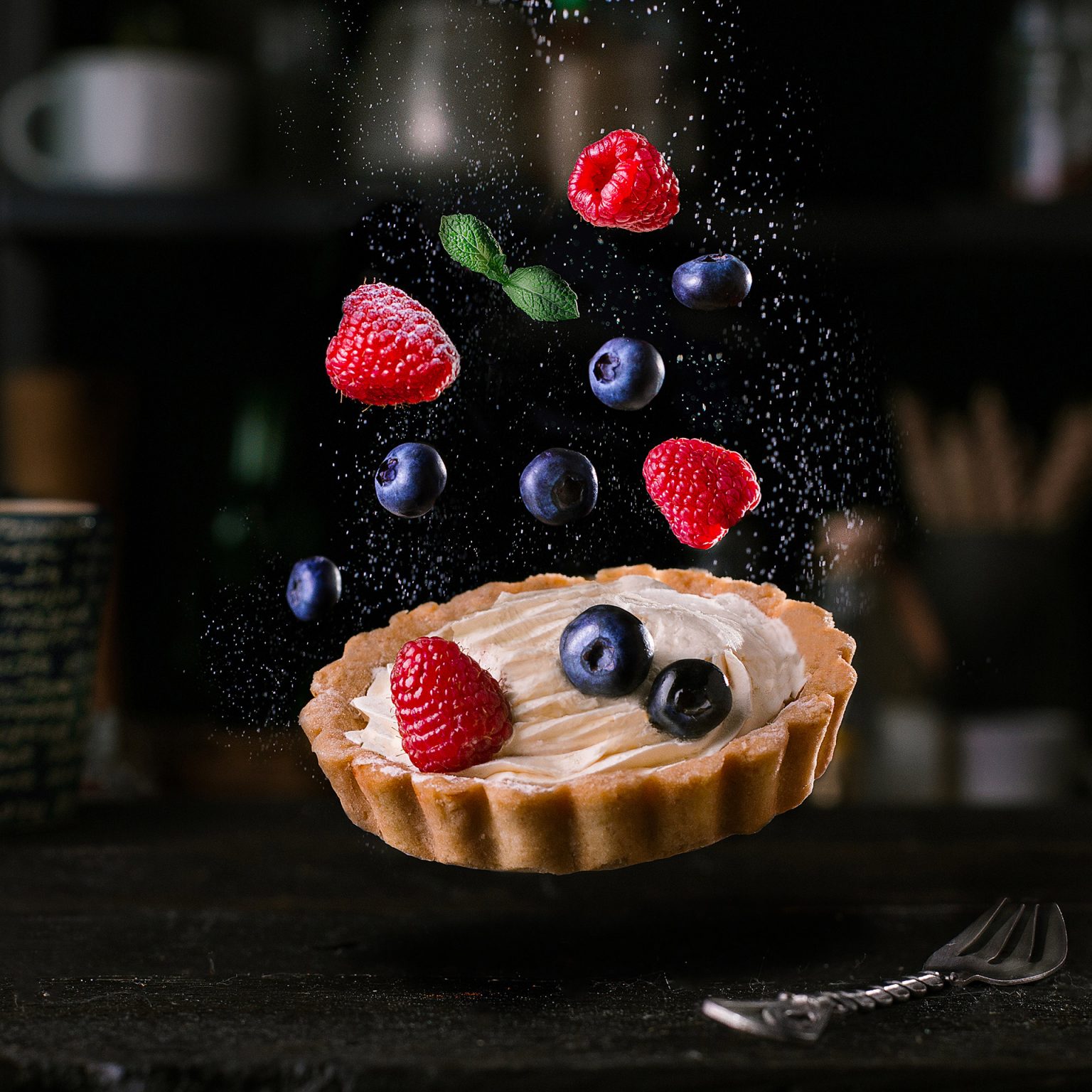
Editing is an essential part of food photography, allowing you to enhance the colors, adjust the lighting, and remove any unwanted elements. By using the right software and techniques, you can transform your food photos into mouthwatering masterpieces.
Here are some basic editing tips and techniques:
Adjustments
- Exposure:Adjust the overall brightness of the image.
- Contrast:Increase or decrease the difference between light and dark areas.
- Saturation:Enhance or reduce the intensity of colors.
- White balance:Correct the color temperature to make the image look more natural.
Filters
- Presets:Apply predefined filters to quickly enhance your images.
- Custom filters:Create your own filters by adjusting individual settings.
- Black and white:Convert your image to black and white for a classic or dramatic look.
Retouching
- Remove unwanted objects:Use the clone or healing brush to remove distracting elements.
- Adjust textures:Sharpen or soften the texture of the food to create a more appealing look.
- Add highlights and shadows:Use the dodge and burn tools to add depth and dimension to your images.
Inspiration
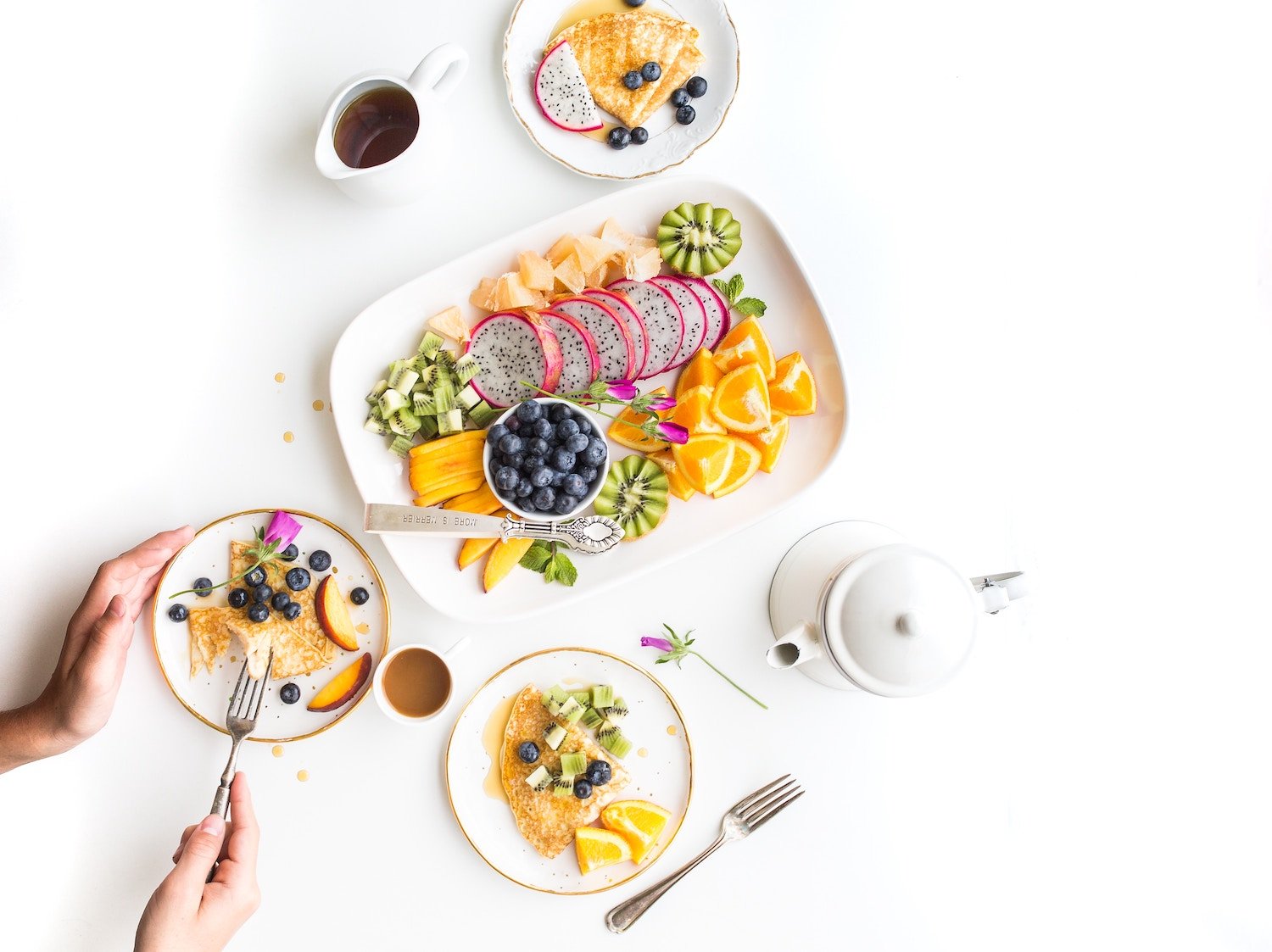
Igniting your creative spark is crucial in food photography. Explore diverse sources to fuel your imagination and elevate your shots.
Immerse yourself in the work of renowned food photographers like Donna Hay, Ed Anderson, and Aran Goyoaga. Their mastery of light, composition, and storytelling will inspire you to push boundaries.
Online Platforms
- Instagram:Follow food photographers and explore hashtags like #foodphotography and #foodart for visual inspiration.
- Pinterest:Create boards dedicated to food photography to gather and organize ideas.
- Food52:Discover recipes, cooking techniques, and stunning food photography.
Books
- “The Food Photography Book” by Lindsay Kaminsky:A comprehensive guide to lighting, composition, and styling.
- “Food Styling: The Art of Preparing Food for the Camera” by Delores Custer:Tips on creating visually appealing food arrangements.
- “The Photographer’s Eye for Food” by John Blais:Insights into capturing the essence and beauty of food.
Workshops
- Online workshops:Platforms like CreativeLive and Udemy offer courses taught by experienced food photographers.
- In-person workshops:Attend hands-on workshops to learn from professionals and network with other photographers.
Creative Techniques

In the realm of food photography, creativity knows no bounds. Innovative techniques are constantly emerging, pushing the boundaries of visual storytelling and transforming food into captivating works of art.
One such technique is levitation, where food items appear suspended in mid-air. This illusion is achieved through the use of wires, supports, or clever camera angles. The result is an eye-catching and ethereal image that captures the viewer’s attention.
Another creative approach is deconstruction, where a dish is broken down into its individual components and arranged in a visually appealing manner. This technique allows the photographer to highlight the textures, colors, and shapes of each ingredient, creating a visually stunning and conceptual image.
Stop motionanimation brings food photography to life. By capturing a series of still images and playing them back in sequence, photographers can create captivating stories that showcase the preparation, cooking, or consumption of food. This technique adds a dynamic element to food photography, engaging the viewer on a deeper level.
Abstract food photographytakes a more artistic approach, using food as a medium for creative expression. By manipulating colors, shapes, and textures, photographers can create visually stunning images that evoke emotions and challenge traditional notions of food photography.
The use of special lenses, filters, and propscan further enhance the visual appeal of food photography. Wide-angle lenses capture expansive scenes, while macro lenses allow for close-up shots that reveal intricate details. Filters can adjust the color temperature, contrast, and other aspects of the image, creating specific moods and atmospheres.
Props, such as utensils, backdrops, and garnishes, add visual interest and context to the composition.
By embracing these creative techniques, food photographers can elevate their craft, create visually stunning images, and evoke powerful emotions in their audience. These techniques enhance the storytelling capabilities of food photography, transforming it from a mere documentation of food into an art form that captivates and inspires.
Food Photography as Art
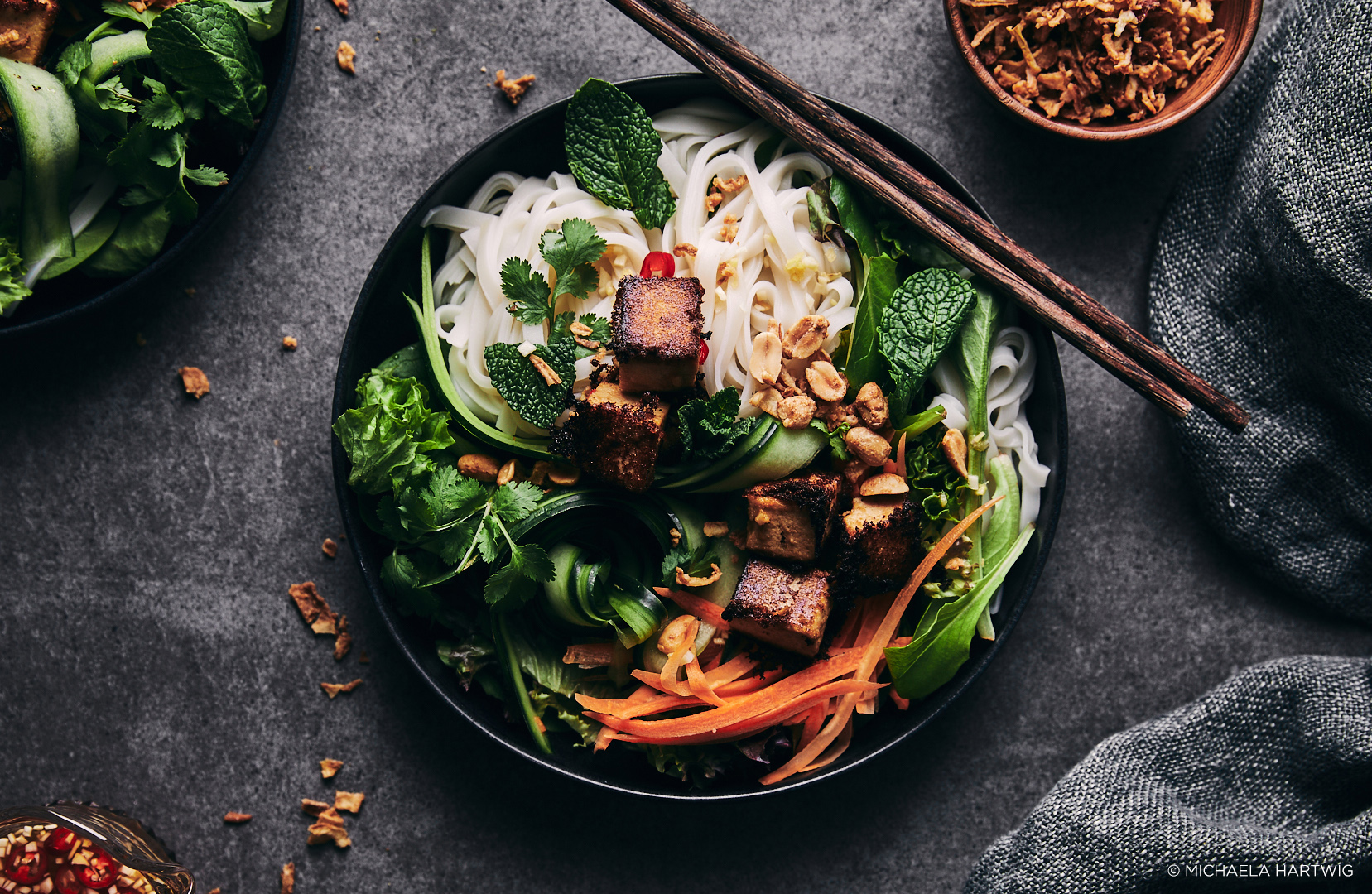
Food photography has evolved beyond its culinary purpose, transcending into an art form that captivates the senses and stirs emotions. Through the lens of skilled photographers, food becomes a canvas, where composition, lighting, and styling converge to create visually stunning and evocative images.
Composition
Composition plays a crucial role in elevating food photography to an art form. By carefully arranging elements within the frame, photographers create a sense of balance, harmony, and visual interest. The rule of thirds, leading lines, and negative space are essential techniques used to guide the viewer’s eye and create a visually appealing image.
Lighting
Lighting is another key element that transforms food photography into art. Natural light, artificial light, and mixed lighting can be used to create different moods and atmospheres. Soft, diffused light enhances textures and creates a warm, inviting ambiance, while harsh, directional light adds drama and emphasizes details.
Creative food photography is a fascinating niche that requires an eye for detail and a touch of creativity. If you’re looking to enhance your skills in this area, I highly recommend checking out creative minds center. They offer a range of workshops and resources specifically tailored to help you master the art of capturing stunning food shots that will make your mouth water.
Styling
Styling is the art of preparing and presenting food for photography. It involves selecting props, backgrounds, and garnishes that complement the dish and enhance its visual appeal. By carefully considering the colors, textures, and shapes of the elements, photographers create a cohesive and visually stunning image that appeals to both the eyes and the taste buds.
Emotional Impact
Food photography as art not only captures the beauty of food but also evokes emotions and creates a connection with the viewer. Through the use of lighting, composition, and styling, photographers can convey a sense of nostalgia, joy, comfort, or even hunger.
The images transcend their culinary purpose and become a means of expressing human experiences and emotions.
Influence of Social Media
The rise of social media platforms has significantly influenced the evolution of food photography as an art form. Instagram, Pinterest, and other platforms have provided a space for photographers to showcase their work and connect with a global audience. The accessibility and immediacy of social media have encouraged experimentation and innovation, leading to a proliferation of visually stunning food photography that blurs the lines between art and culinary documentation.
Trends in Food Photography
The world of food photography is constantly evolving, with new trends emerging all the time. These trends are influenced by a variety of factors, including social media, food blogging, and the changing tastes of consumers.
One of the most noticeable trends in food photography is the increasing use of natural light. Natural light can create a more inviting and realistic look, and it can help to showcase the food in its best light. Photographers are also using more creative lighting techniques, such as backlighting and sidelighting, to create dramatic and eye-catching images.
Composition
Composition is another important aspect of food photography that has seen some changes in recent years. Photographers are now using more creative and dynamic compositions to create images that are more visually appealing. This includes using unusual angles, cropping the image in unexpected ways, and using negative space to create a sense of depth and interest.
Social Media and Food Blogging
Social media and food blogging have had a major impact on food photography trends. These platforms have given food photographers a way to share their work with a wider audience, and they have also helped to create a community of food enthusiasts who are constantly sharing new ideas and techniques.
As a result of the influence of social media and food blogging, food photography has become more accessible and more popular than ever before. Today, anyone with a camera and a passion for food can create beautiful and inspiring food photographs.
Discuss the importance of food photography in marketing, specifically for promoting restaurants, food products, and brands.
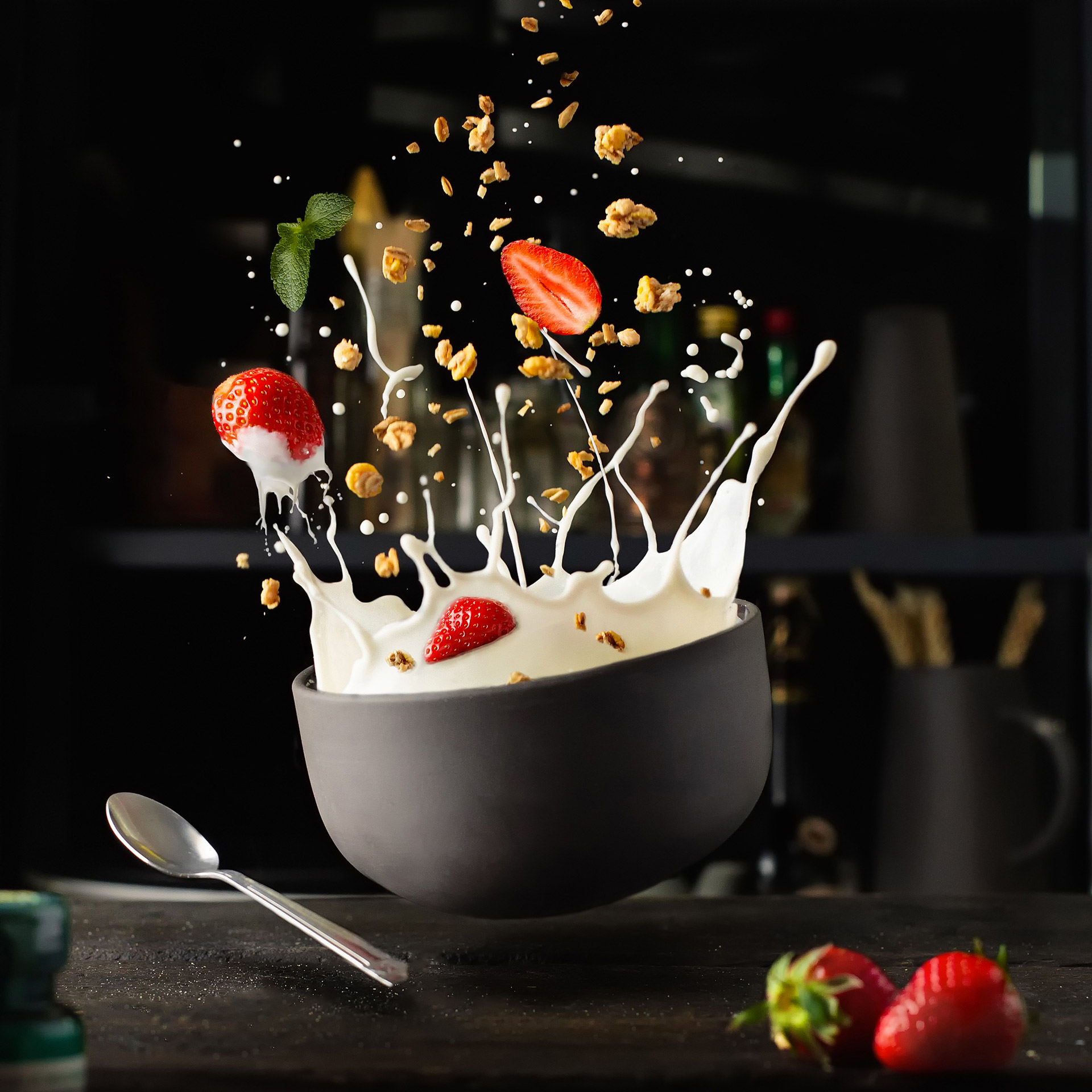
IntroFood photography plays a pivotal role in marketing, as it has the power to entice potential customers and drive sales. By capturing the visual appeal of food, businesses can create a strong brand identity, promote their products effectively, and connect with their audience on an emotional level.
Restaurants
For restaurants, food photography is crucial for showcasing their menu items and creating a visually appealing online presence. High-quality images of mouthwatering dishes can entice diners, encourage reservations, and increase foot traffic.
Food Products
Food photography is equally important for food product manufacturers. By highlighting the freshness, quality, and packaging of their products, brands can create a strong visual identity and differentiate themselves from competitors.
Brands
Food photography can also be used to build a strong brand identity. By using consistent lighting, composition, and color schemes, brands can create a recognizable visual aesthetic that customers can associate with their products.
Food Photography for Social Media
Social media is a powerful platform for showcasing food photography, and there are specific considerations to keep in mind when creating images for these platforms.
Platform-Specific Requirements
Different social media platforms have specific requirements for image size and aspect ratio. For example, Instagram favors square images, while Pinterest prefers vertical images. It’s important to adjust your images to fit these requirements to ensure they are displayed properly.
Visual Appeal
Creating visually appealing images is crucial for success on social media. Use vibrant colors, interesting compositions, and natural light to make your food photography stand out. Pay attention to the lighting, ensuring it is even and flattering, and consider using props and backgrounds to add interest and depth.
Hashtags and Engagement
Hashtags are essential for promoting your food photography on social media. Use relevant hashtags to categorize your images and make them discoverable by users searching for specific content. Engage with your audience by responding to comments, asking questions, and running contests to increase engagement.
Editing Software
Editing software can enhance your food photography by adjusting lighting, color, and composition. Use tools like Adobe Lightroom or Photoshop to fine-tune your images, but avoid over-editing and maintain a natural look.
Tips for Limited Resources
Even with limited resources, you can create visually appealing food photography. Use natural light from a window or outdoors, and experiment with simple props like plates, cutlery, and greenery. Pay attention to composition and lighting, and don’t be afraid to experiment with different angles and perspectives.
Examples of Successful Food Photography
For inspiration, explore successful food photography accounts on social media. Study their use of lighting, composition, and color balance, and note how they engage with their audience.
Food Photography for Websites
Food photography is an essential element for any website that features food-related content. It can entice visitors, showcase culinary creations, and increase engagement. Optimizing food photography for web use is crucial to ensure fast loading times and a visually appealing experience.
Image Compression
Image compression reduces the file size of food images without compromising their quality. This is important for websites as it speeds up loading times and saves bandwidth. Use compression tools or software to optimize images for the web while maintaining their visual appeal.
File Formats
Choose appropriate file formats for food photography on websites. JPEG is commonly used due to its good compression capabilities, while PNG is preferred for images with transparent backgrounds. WebP is a newer format that offers better compression than JPEG while maintaining image quality.
Alt Tags
Alt tags provide alternative text descriptions for images. They are important for accessibility and . Use descriptive alt tags that accurately describe the food image, including the dish name, ingredients, and any special features.
Common Queries
What are the key elements of creative food photography?
Visual appeal, storytelling, composition, lighting, and editing are the cornerstones of creative food photography.
How can I improve the visual appeal of my food photography?
Experiment with different angles, lighting, and props to create visually stunning images that draw the eye.
What are some tips for telling a story through food photography?
Use props, backgrounds, and lighting to create a narrative that evokes emotions and conveys a message.
How can I use lighting to enhance my food photography?
Natural light, artificial light, and mixed lighting offer different possibilities for creating dramatic, inviting, or balanced images.
What editing techniques can I use to improve my food photographs?
Basic editing tools such as cropping, exposure adjustment, and color correction can significantly enhance the overall look and feel of your images.